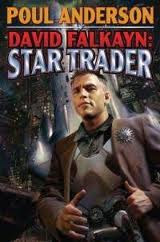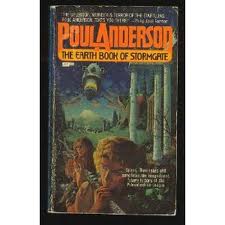-Poul Anderson, Flandry's Legacy, New York, 2012, p. 276.
There are two points to note here. First, Helen is the third Vixenite Kittredge to be named in the History of Technic Civilization. Adzel met one and Flandry met another. Secondly, in this passage, the narrator directly addresses the reader, "Consider..." This narrator then turns out either to be collective or at least to include the reader in his use of the plural pronoun, "We...," and also to be consulting data at a later date within the History. Thus, this is not the timeless, omniscient narrator who sometimes transcends fictional characters' points of view. Instead, what we have here is a historian reconstructing what must have occurred to some individuals during the Magnusson rebellion, almost a later version of the Ythrian Hloch who had compiled The Earth Book Of Stormgate in an earlier period, just after the Terran War on Avalon. (War is a recurring theme of the History.)
This historian of the Magnusson rebellion reconstructs very creatively:
"We can imagine Ensign Helen Kittredge on leave - let us say, on Ansa..." (p. 278)
So we do not know that she was on Ansa although we can imagine that she might have been on leave somewhere like that. In Mirkheim, we learn that Nicholas van Rijn likes onion soup a la Ansa, in "Sargasso of Lost Starships," we see the planet Ansa just after it had been forcibly annexed by the recently founded Terran Empire and, in The People Of The Wind, we learn that an Imperial cruiser is called Ansa.
Helen Kittredge is:
"...assigned to energy weapons control on the light battleship Zeta Sagittarii." (ibid.)
Our narrator knows only that Zeta Sagittarii "...was lost." (p. 283)
- so he creatively imagines four different ways that she might have died.
The description of a space battle is comparable to those in Ensign Flandry and The People Of The Wind. This particular battle, when Magnusson defeats Blenkiron, is commemorated in a name. A previously innominate red dwarf star will henceforth be known to spacefarers as Battle Sun as, in England, a village near Hastings is called Battle because it is the site of the Battle of Hastings.







































